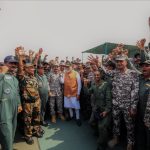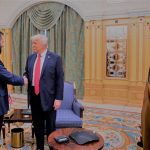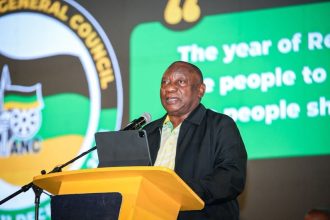In a move that signals both frustration and firm resolve, India has taken its first tangible step to respond to trade pressures from the United States. After years of restraint, New Delhi has now proposed imposing duties on select American goods—marking a clear shift in tone as it confronts the tariff-heavy legacy of former U.S. President Donald Trump.
This proposal, quietly submitted to the World Trade Organization (WTO) on May 12, comes as a direct response to the U.S. administration’s steel and aluminum tariffs, which were initially imposed in 2018 and extended in 2024. According to the WTO filing, India is now considering “an increase in tariffs on selected products originating in the United States.” While the document stops short of naming specific items, it signals that India is ready to defend its economic interests more assertively.
The backstory adds weight to the move. India, as the world’s second-largest producer of crude steel, has seen $7.6 billion worth of its steel and aluminum exports face stiff barriers in the U.S. In return, India is not merely reacting; it’s carefully recalibrating its stance. Until now, New Delhi had prioritized diplomacy, opting to continue trade talks even while absorbing tariff shocks.
“The timing is sensitive,” said Ajay Srivastava, founder of Global Trade Research Initiative. “India is balancing between protecting its industries and pursuing a broader free trade agreement with the United States.”
That balance is delicate. On one hand, India has some of the highest tariffs in the world, a fact not lost on Trump, who had labeled the country a “tariff abuser.” On the other, New Delhi has repeatedly offered to narrow its tariff gap with Washington by two-thirds—clearly showing its willingness to negotiate.
Interestingly, this retaliation is not a knee-jerk reaction. Just last month, India announced it would not respond hastily to new U.S. tariffs, signaling patience and diplomacy. However, as domestic industries, especially steelmakers, continue to face rising global competition—primarily from China—India has also had to act internally. Temporary tariffs of 12% were recently placed to control the flood of cheap steel imports.
Now, India is drawing a line—not to escalate tensions, but to assert fairness. The road to a bilateral trade agreement still remains open, with both sides hoping to finalize a deal by the fall. But India’s latest move sends a clear message: it will not be a passive player in global trade dynamics.
In today’s world of shifting alliances and unpredictable policies, this step is less about retaliation and more about recognition—recognizing India’s place in global commerce and its right to safeguard that role.








